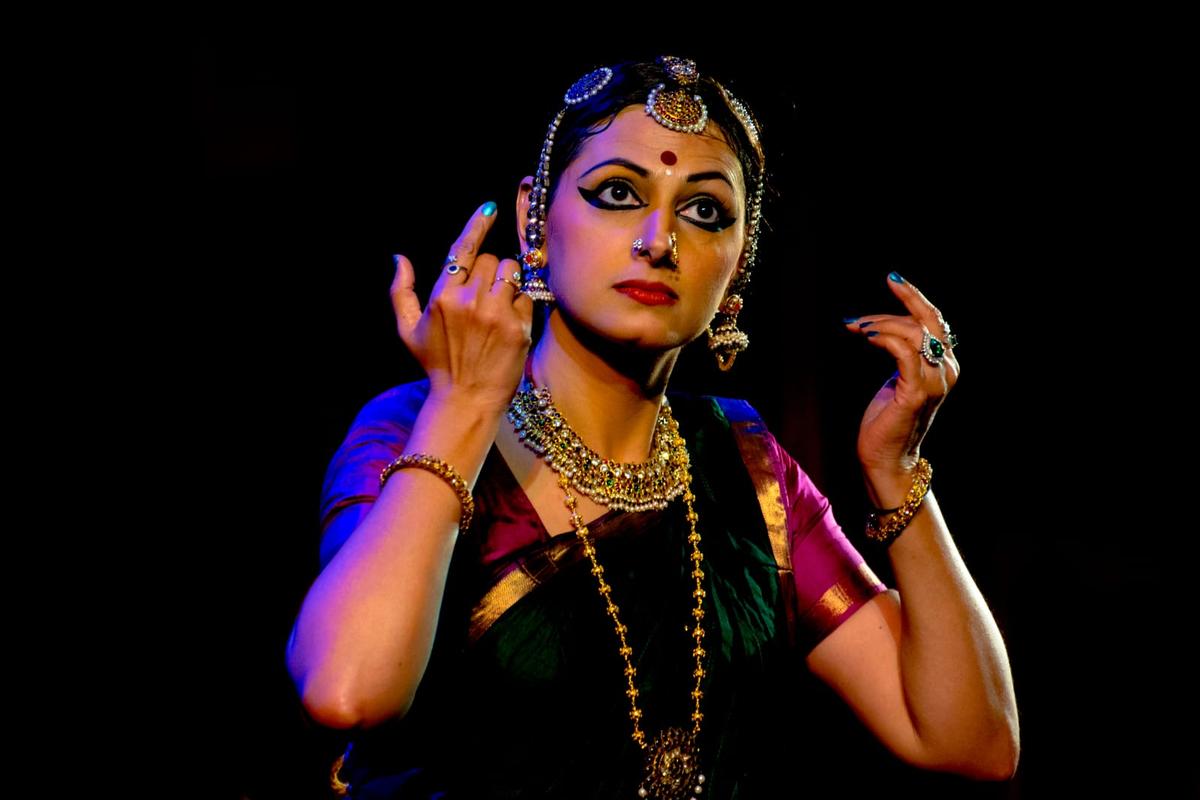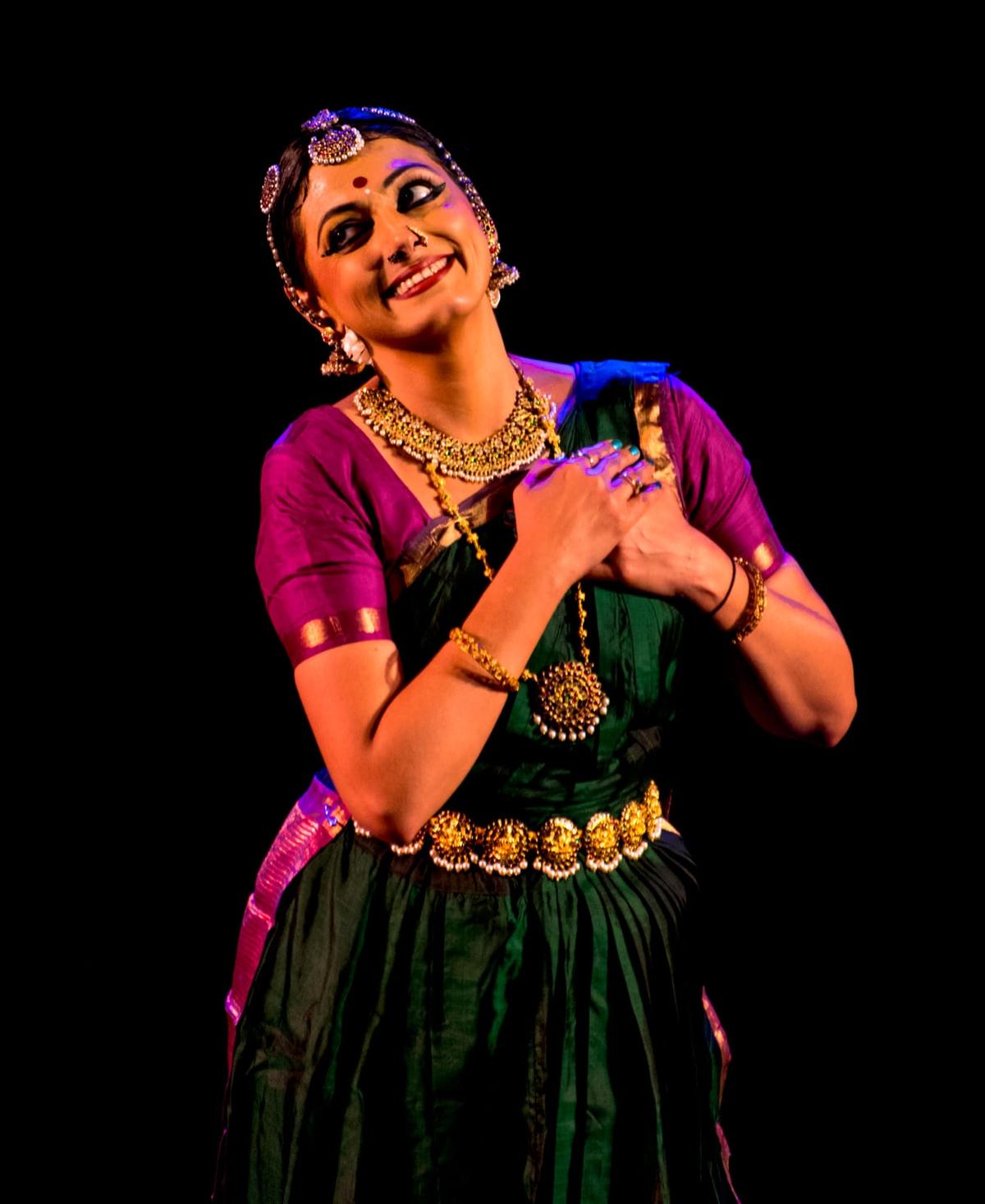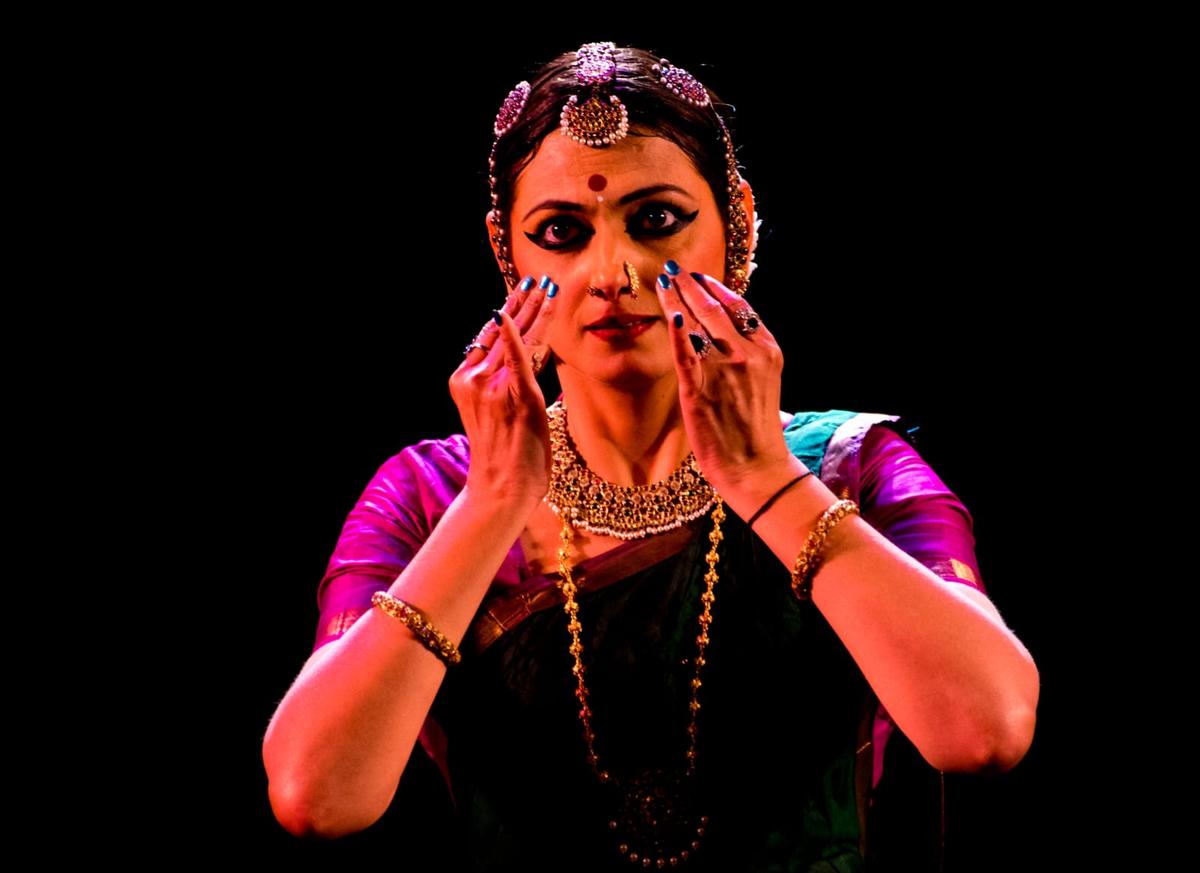Apeksha Niranjan | Photo Credit: Special Arrangement
The famous Sanskrit verse ‘Yato hasto tato drishtih, yato drishtih tato manah/ Yato manastato bhao, yato bhaavo tatah rasah’ is taken from this text. Acting mirror This means, ‘Wherever the hands go, the eyes should also go there, wherever the eyes go, the mind should also go there, wherever the mind goes, there the feeling or emotion is generated.’
The essence of this shloka was presented in a solo Bharatanatyam ‘Nayanam’ performed by Apeksha Niranjan recently at the Stein Auditorium, Habitat Centre, Delhi, in which she expressed various emotions through her eyes.
A disciple of senior Bharatanatyam dancer and teacher Sucheta Chaphekar and Alka Lajmi, Apeksha, who is also a Marathi actor, is the founder-director of Nrityanjali Performing Arts. Her expressive face, effortless movements and sculptural postures make her performances captivating.

The beauty of difference of vision in Bharatanatyam | Photo Courtesy: Special Arrangement
The core of his theme-based presentation ‘Nayanam’ was that the entire Bharatanatyam margam is based on ‘nayan’ (eyes), starting with the opening alarippu which invokes Lord Shiva. Trinayan Shambhu (three-eyed Shiva), mother of the world Meenakshi (the fish-eyed goddess), and Lotus eyes (whose eyes are like lotus) Padmanabha. It was set to Misra Chapu taal and was choreographed by Apeksha herself.
The next song ‘Krishna Kauthuvam’ was based on the Marathi song ‘Mee Krishna Pahila’, which praised the beauty of Krishna and his lovely eyes by the gopis. It was choreographed by her guru Sucheta Chaphekar.

Apeksha showed how to express emotions through eyes | Photo Credit: Special Arrangement
The central part of the song ‘Varnam’ was based on Soundarya Lahari’s ‘Shiva Shringar Radha’, in which Apeksha expressed various emotions reflected in Parvati’s eyes like Shringar bhaav while looking at Shiva, anger ‘Sarosha Gangaya’ seeing Ganga sitting in Shiva’s matted locks, fear at the snakes around Shiva’s neck and finally the prayer for compassion in the eyes of Devi who is like a mother, ‘Dehi Mayi Janani Drishtih Sakaruna’. Choreographed by Apeksha, the song was composed by Smita Mahajan in Raga Bihag with the jatis of Venkatesh. The main Raga Bihag transformed into a Ragamalika of various Ragas like Malkauns, Kalavati and Hindol according to the changing emotions.
Erasing geographical and cultural boundaries, Apeksha, who had previously incorporated Gregorian chants (sung in Roman Catholic churches in Europe) in her Bharatanatyam recitals, incorporated Polish folk music in her performance that evening. Lubiena’s song was sung on a melodic rhythmic move similar to the Dadra taal of Hindustani music. Composed by the Odmianci Kapella group of Polish folk musicians, the song was about the ritual of stealing the groom’s shoes, similar to North Indian weddings.

Eye makeup is an important part of a dance performance | Photo Credit: Special Arrangement
This was followed by Vatsalya Padam, in which Apeksha portrayed the emotions of a young mother who is looking for her child whom she scolded for his naughty behaviour. Composed by Smita Mahajan, the song was choreographed by Alka Lajmi.
The Surdas verse ‘Ankhiyan Hari Darshan Ki Pyaasi’ composed in Raga Shiv-Ranjani was about the inner eye of the blind poet who is still able to see with his eyes. Favorite deityLotus-eyed Krishna. The Apeksha ended with a Tillana in Raga Yaman, where the dancer’s eyes reflect the image of Lord Krishna. happy (Happy), astonished (Surprised) Devi’s eyes are praying to Devi to bless him sight of kindness Onto the dancers and the audience!